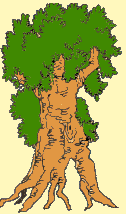
Cure Sickle Cell Disease Naturally
- By honvouezekiel6gmailcom
- On 2025-06-30 at 12:16
- 0 comments
Discover a highly effective herbal treatment that combats sickle cell anemia in all its forms and guarantees you perfect health.
Plants to cure sickle cell disease
Sickle cell disease, also known as sickle cell anemia, is an inherited genetic disorder affecting red blood cells. It is particularly prevalent in sub-Saharan Africa, the Caribbean, India, the Middle East, and among populations of African descent in Western countries. It constitutes a major public health problem, affecting millions of people worldwide. Characterized by a hemoglobin abnormality, this disease causes red blood cells to become deformed, compromising their ability to effectively transport oxygen. This article provides a comprehensive analysis of sickle cell disease: its causes, mechanisms, symptoms, diagnosis, complications, prevention efforts, and natural treatment.
What is Sickle Cell Disease?
Sickle cell disease is a genetic disorder characterized by the production of an abnormal hemoglobin called hemoglobin S. Hemoglobin is a protein found in red blood cells that carries oxygen to tissues. In people with sickle cell disease, this hemoglobin S causes the red blood cells to become deformed and become sickle-shaped (or crescent-shaped), instead of the normal round and flexible shape.
These sickle-shaped cells are rigid and sticky, making them prone to blockage in blood vessels, causing poor oxygen flow and severe pain.
Possible Causes of Sickle Cell Disease
Sickle cell disease is an inherited genetic disorder, meaning it is passed down from parent to child through genes. It is therefore not caused by infection, diet, or lifestyle. The main causes are listed below:
Hemoglobin Gene Abnormality
The underlying cause of sickle cell disease is a mutation in the HBB gene located on chromosome 11, which codes for the beta chain of hemoglobin.
Normally, this gene produces hemoglobin A (HbA), found in red blood cells.
When mutated, the body produces an abnormal hemoglobin called hemoglobin S (HbS).
Recessive Inheritance
Sickle cell disease follows an autosomal recessive pattern of inheritance:
A healthy carrier (AS genotype) has a single mutated gene. They usually show no symptoms, but can pass the gene on to their children.
For a child to have sickle cell disease (SS), both parents must be carriers of the mutated gene.
FatherMotherRisk to the child
ASAS25% SS, 50% AS, 25% AA
ASAA50% AS, 50% AA
SSAA100% AS
SSAS50% SS, 50% AS
Lack of environmental factors
Unlike other diseases, sickle cell disease is not caused by bacteria, viruses, or living conditions. However, certain environmental factors such as:
cold,
stress,
dehydration,
infections,
can trigger or worsen symptoms in those affected, but do not cause the disease itself.
The Different Symptoms of Sickle Cell Disease
Chronic Anemia
The rapid destruction of red blood cells leads to anemia, with the following symptoms:
Fatigue
Palor
Shortness of breath
Slowed growth in children
Vasocclusive Crises
This is acute and severe pain due to the obstruction of small blood vessels by sickle-shaped red blood cells. The most commonly affected areas are:
Bones (hands, feet, spine)
Chest
Abdomen
Joints
Frequent Infections
The spleen, an essential immune defense organ, is often damaged early on, making people with sickle cell disease vulnerable to serious bacterial infections (such as pneumococcus).
Acute Chest Syndrome
A serious complication characterized by chest pain, cough, fever, and respiratory distress. It can be fatal without prompt intervention. Strokes
Particularly common in children with sickle cell disease, strokes are caused by occlusion of cerebral arteries.
Skin ulcers
Chronic wounds, particularly on the legs, can appear in adolescents or adults.
Delayed growth and delayed puberty
Chronic anemia and painful episodes slow the child's overall development.
How is sickle cell disease diagnosed?
Diagnosis is based on specific blood tests:
a. Hemoglobin electrophoresis
The standard method for detecting the presence of hemoglobin S, as well as other types (A, C, F, etc.).
b. Sickling test
Highlights the deformation of red blood cells in low oxygen conditions.
c. Prenatal Diagnosis
The disease can be identified in utero by amniocentesis or chorionic villus sampling.
d. Newborn Screening
This is essential in high-prevalence countries to ensure early treatment.
Cure sickle cell disease naturally Plants to cure sickle cell disease How to cure sickle cell disease with plants Discover everything about treating sickle cell disease
Add a comment






















